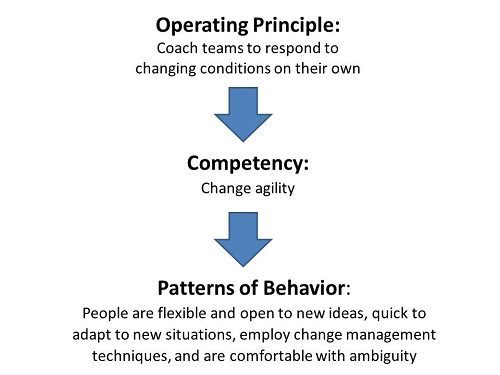ATD Blog
Coach to Develop Genuine Team Collaboration
Thu Nov 08 2018

This is the first in a five-part series that describes how managers can coach people to practice genuine collaboration in the workplace. Each post represents an excerpt from ATD’s new book, Focus on Them, scheduled for publication in December 2018. Winsor Jenkins is a contributing author of the book.
The importance of culture cannot be overstated when it comes to collaboration. We know that technology continues to be an enabler of collaboration. However, if we believe that culture is a pattern of basic assumptions invented, discovered by, or developed by a given group as it learns to cope with its problems (as described by Edgar Schein), we must acknowledge that culture is critical to collaboration. In other words, collaboration would never happen if we relied solely on technology!
Your road map for developing a culture of collaboration starts by focusing on the components illustrated in the figure below:

Typically, a team charter is described as a set of agreements that clearly describes what the team wants to accomplish, why it’s important, and how the team will work together to achieve results. Most team charters have components that describe the team’s vision, mission, purpose, values, norms, team member roles, key responsibility areas and team goals, communication strategies, decision-making authority and accountability, and available resources. I’ve limited this discussion on team charters to the components listed above, all of which are critical to practicing genuine team collaboration.
Developing a team charter in this instance represents only one key piece of a larger operating framework for organizations to address when developing a culture of collaboration. Components to address include HR systems and processes, compensation and rewards, and goal setting, among others. Establishing a collaborative mindset at the top and cascading it down through the organization would be the most significant part of the framework.
Coaching Collaboration’s Operating Platform
Your coaching starts with understanding the three key components that make up collaboration’s operating platform:
Theory Y assumptions
operating principles
competencies.
Theory Y, or positive, assumptions about the potential of people to get the job done serve as the foundation for developing a culture of collaboration. Edgar Schein, a world-renowned expert on organizational culture, describes one’s underlying assumptions as the source of values—and eventually behaviors and actions for defining culture. Holding Theory Y assumptions, for example, means you are well-positioned to hold a value that helps build trust with people on your team. This contrasts with managers who have Theory X (negative) assumptions and will find it difficult to trust people and therefore struggle with delegation.
Collaboration’s operating principles represent a series of novel principles that serve as the foundation for developing an alternative—or collaborative mindset. These operating principles, adapted from the global game of soccer to mirror the team’s actions on the field, serve as governing principles to help frame individual and team decisions around collaboration. Ultimately, these behaviors and habits will lead to improved team effectiveness. Without these principles (and corresponding platform described above), the team’s actions and its application of tools will be limited.
Collaboration’s competencies are made up of a number of competencies aligned with collaboration’s operating principles. Through the process of developing competencies that are aligned with each operating principle, you and the team start to acquire a deeper understanding and appreciation of what it means to have a collaborative mindset. I describe this as a never-ending cycle where collaboration’s mindset not only helps shape or frame an individual's (and team’s) application of collaboration’s competencies, but also serves to motivate their interest or desire to acquire the needed competency.
Below is an example of an operating principle along with one of three essential competencies aligned with this principle, as well as the behaviors associated with this specific competency.

The combination of Theory Y assumptions, operating principles, and collaboration competencies enables you (and your team) to lead with a collaborative mindset and provide a safe work environment to practice genuine team collaboration and achieve outstanding team results.
